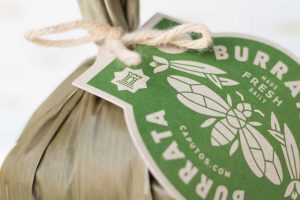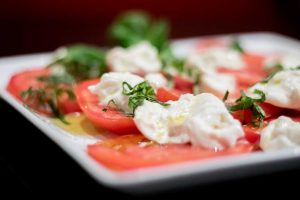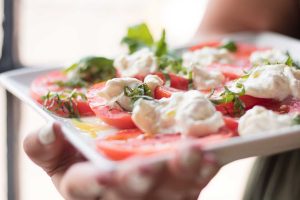 Italian cuisine does not exist. I could likely make this argument about many other classic cuisines, but no other country lives and dies by the bible of regional cuisine quite like Italians do. Calabrian cuisine exists, Roman cuisine exists, Tuscan cuisine exists, but none of these are the same. That said, there is one common opinion that has seeped into the veins of every region, city, and town that inspires some of our favorite dishes. Source ingredients locally and seasonally at the peak of ripeness and quality. Then, honor those ingredients with pure, simple preparation. Don’t complicate it.
Italian cuisine does not exist. I could likely make this argument about many other classic cuisines, but no other country lives and dies by the bible of regional cuisine quite like Italians do. Calabrian cuisine exists, Roman cuisine exists, Tuscan cuisine exists, but none of these are the same. That said, there is one common opinion that has seeped into the veins of every region, city, and town that inspires some of our favorite dishes. Source ingredients locally and seasonally at the peak of ripeness and quality. Then, honor those ingredients with pure, simple preparation. Don’t complicate it.
So, let’s simplify things and get back to the basics. Let’s do it with one classic dish that has been the victim of complication across the globe: Insalata Caprese.
The beloved ‘Salad of Capri’ is a celebration of the union of two of our favorite ingredients, mozzarella and tomatoes. We’re in the peak of tomato season here in SLC, so there is no better time to serve this than right now. Add up to three more ingredients and we have a dish worthy of greatness.
 The key, of course, is selecting the highest quality ingredients. Locally grown tomatoes picked when ripe rather than picked under-ripe to ripen in the pipeline of food transportation will result in tomatoes that taste like tomatoes. Start here. Select fragrant, dense tomatoes of your favorite hue. I prefer a large heirloom like Eva Purples with thin skin and abundant flesh blotted with a towel to remove any excessive amounts of juice.
The key, of course, is selecting the highest quality ingredients. Locally grown tomatoes picked when ripe rather than picked under-ripe to ripen in the pipeline of food transportation will result in tomatoes that taste like tomatoes. Start here. Select fragrant, dense tomatoes of your favorite hue. I prefer a large heirloom like Eva Purples with thin skin and abundant flesh blotted with a towel to remove any excessive amounts of juice.
From here, choose your cheese. My first choice is our housemade burrata. I love how the creamy, decadent interior of burrata permeates the holes in each slice of tomato. You can also choose mozzarella di bufala from mainland neighbor Campania or another fresh cow’s milk mozzarella. The key here is a fresh cheese, no aged mozzarella here, please! Drop dollops or slices throughout your tomato slices, leaving more tomato than cheese in your wake.
Add fragrant basil, ideally picked at this moment. I prefer a chiffonade or fine chop to evenly disperse flavor and aroma across the plate rather than using whole leaves. Finally, add a sprinkle of finishing salt (e.g. a fleur de sel), which should be given a few minutes to melt into your ingredients to highlight the flavors in fruit, dairy, and herb rather than add ‘salty flavor’.
 If you wish (and I always do), serve with a bottle of your very best olive oil. Drizzle sparingly over the plate just before digging in for a touch of bitterness and grassy backbone to an already excellent dish.
If you wish (and I always do), serve with a bottle of your very best olive oil. Drizzle sparingly over the plate just before digging in for a touch of bitterness and grassy backbone to an already excellent dish.
You’ll notice no mention of balsamic, olives, pesto, or any other ingredient. While I love all these things, they have no place on a plate served as caprese. Save fusion, addition, and refrigerator purging for another time. Right here, right now, when tomatoes are meant to be eaten and burrata is being tied up as you read, this is the time to enjoy the pureness of caprese.

